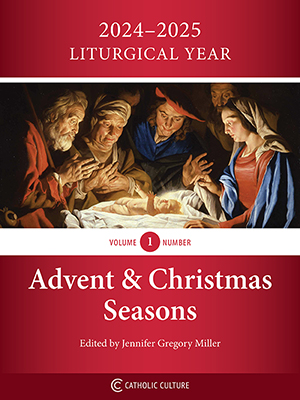The MOST Theological Collection: Outline of Christology
"IV. The Covenants"
Covenants are a very basic pattern in the OT. And our redemption is, under one aspect, a new covenant. Therefore we need to examine covenants. We need to go back to the great covenant of Sinai. There God spoke to the people through Moses (Ex. 19. 5): "If you really hearken to my voice and keep my covenant, you will be my special possession, dearer to me than all other peoples."
Since the work of G. Mendenhall (Law and Covenant in the Ancient Near East, Pittsburgh, 1955. Cf. Biblical Archaeologist 17, 1954, 49-76) many think the Sinai covenant followed the pattern of ancient suzerainty treaties, best known through those of the Hittites from the second millennium B.C. In this pattern there are the following elements: (1) Preamble, which identifies the overlord and his genealogy and titles; (2) Historical prologue, giving chiefly the benefits given by the overlord; (3) Stipulations imposed on the vassal; (4) Provision for deposit of the treaty in the temple and for public reading at intervals; (5) The gods who are witnesses; (6) Curses and blessings for fulfillment/nonfulfillment; (7) Vassal's oath of obedience; (8) Solemn ceremony of the oath; (9) Procedure against a rebellious vassal.
Not all think the Sinai covenant really followed this form - the elements mentioned are found only scattered in Exodus 19-24, not all in one place. Only in the later renewal mediated by Joshua (Josh 24) do we find many elements together. Cf. for a somewhat different view from that of the majority, D. J. McCarthy, Treaty and Covenant (Analecta Biblica 21A, Rome, 1978).
Most scholars seem to prefer to call the Sinai covenant unilateral, i.e., God as overlord imposes obligations, has no obligation to carry out his own promises. But this is impossible. God cannot say: If you do this, I will do that, as He did in Ex 19. 5 and then ignore what He said. He is faithful and cannot go back on His word. Even though technically He cannot owe anything to any creature, yet, since He cannot violate His own word, the effect is the same. For a study with evidence that Sinai was bilateral, cf. Wm. Most, "A Biblical Theology of Redemption in a Covenant Framework," in Cath. Biblical Quarterly, Jan. 1967, pp. 1-19.
We notice two major features here: 1) It brings into being a People of God, 2) they get favor on condition of obedience. The OT reports sadly how often they failed, going after idols. God warned them, and at last He would send in a foreign power to oppress them to bring them to their senses. When they would repent, He would rescue them.
The chief foreign powers to oppress them were the people of Amalek, the Philistines, the Assyrians, and the New Babylonians. Tiglath-Pileser III (745-27) invaded the territory of Naphtali, took its fortified cities, and sent the Hebrew population into Assyria (cf. 2Kgs. 15. 29)> He also deported the Transjordanian tribes of Reuben, Gad, and Manasseh ( 1 Chr. 5. 6 & 26. Cf. Is 9. 1). Shalmaneser V of Assyria (727-22) captured Samaria in 722 (2 Kgs. 17. 3-6), and either he or his successor Sargon II ( 722-05) deported most of the remaining Israelites (2 Kgs. 17. 6 cf. 2 Chr. 30. 1 & 10-11). The purpose of these deportations was to break their national spirit. It worked, these northern tribes never returned even when Persia gave permission to return.
But finally came the great crash, when Nebuchadnezzar II of Babylon came down in two waves, 597 and 587 (some prefer 596 and 586). He ruined the Temple and city, and took most of the people into captivity to break their national spirit. There was a third deportation in 581 after the murder of Gedeliah whom Nebuchadnezzar had appointed governor over Judah. When Cyrus of Persia, after conquering Babylonia, in 539 allowed the Jews to return, only two tribes, Judah and Benjamin did return. The rest were absorbed into Babylonia and never came back.
It was during this period that God spoke again through Jeremiah 31. 31ff: "I will make a new covenant. It will not be like the covenant I made with your fathers, for they broke my covenant, and I had to show myself their master. But this is the covenant: I will write my law on their hearts; I will be their God and they will be my people."
We notice there will be a difference, for the old was broken, the new will not be broken. But the two essentials we saw at Sinai are still there: a People of God, to get favor on condition of obedience. As we shall see later, the essential obedience would be that of Jesus (cf. Rom 5. 19 and LG 3). Did Jeremiah see that would be the case? We do not know. But the chief author of Scripture, the Holy Spirit, can intend more than the human author sees. Still less likely is it that Jeremiah saw that the obedience of our Lady would play a role here: cf. LG 56 & 61.
Before moving ahead, we should notice that if we ask why God gave good things under the covenant, the reply would come on two levels: 1) On the most basic level, no creature could by its own power generate a claim on God. Hence His giving is pure unmerited, unmeritable generosity. 2) On the secondary level, i.e., given that fact that He had freely entered into and bound Himself by covenant, we could speak of Him as repaying the people. In this sense St. Paul in Rom 2. 6 could say that God will repay each one according to his works - in spite of his insistence that justification is gratuitous. This same distinction, as we shall see later, will apply in the new covenant.
Jeremiah as we saw, spoke of a new covenant, and of the old as broken. St. Paul in Romans 11 makes a comparison of two olive trees: the tame olive tree is the original People of God. Many branches were broken off, by their infidelity. Into their place were engrafted branches from the wild olive tree, the gentiles. Thus the gentiles become part of the original People of God. Further, Paul says (11. 29) that the call of God to Israel to be His people is without repentance, is not withdrawn, and that at the end a remnant will be converted to Christ.
There is no conflict between the two concepts, of a new, or of an old extended covenant. The Kingdom of the Messiah had been foretold centuries ago, and was the fulfillment of the promises made before. Yet it was a new covenant in this respect, that there was a new obedience, and a new head, Christ.






